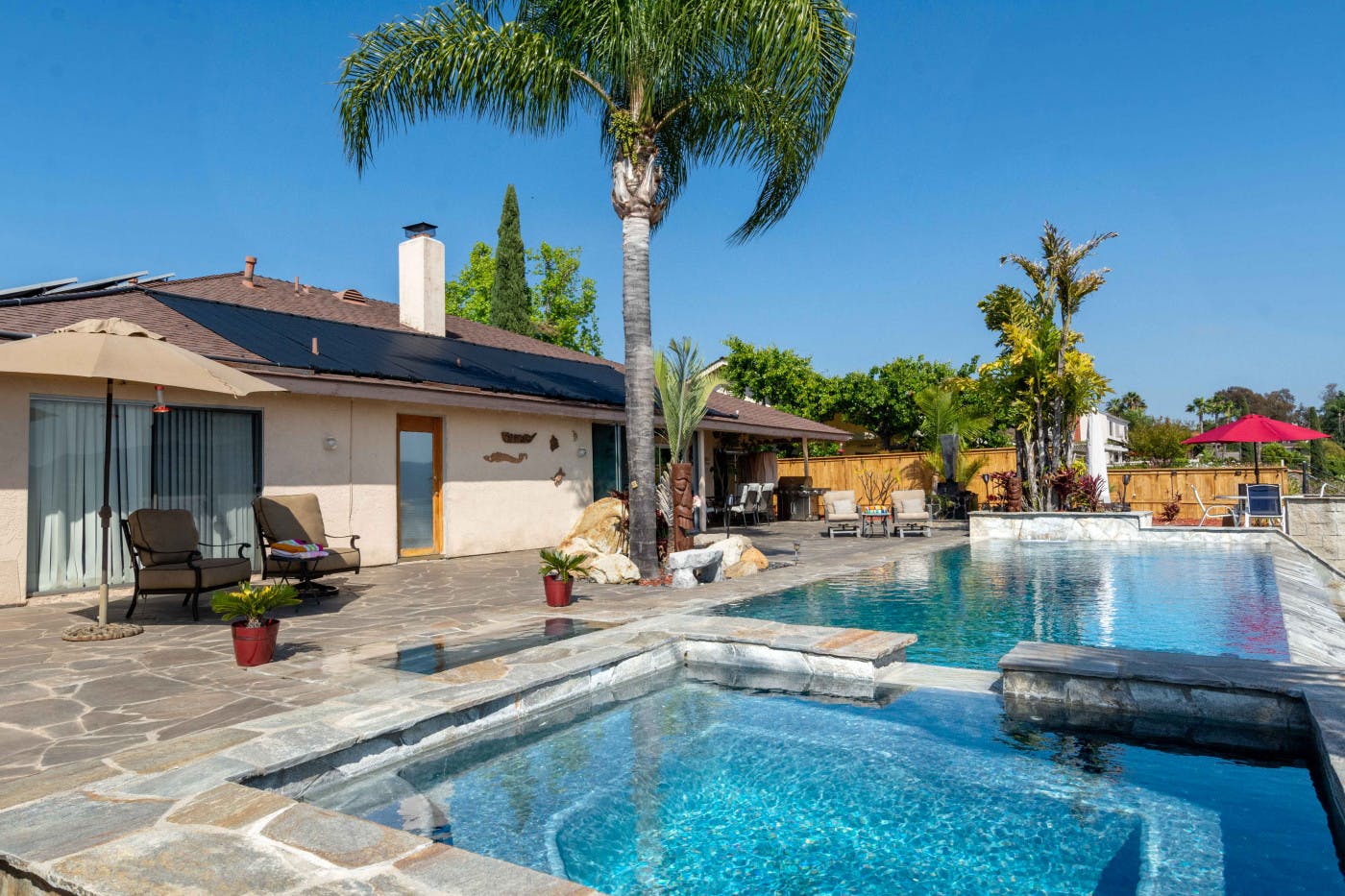For many homeowners, owning a pool is synonymous with dream-like summer days. However, maintaining a pool requires dedication and know-how. One critical element of pool care that often gets overlooked is the use of a pool stabilizer. Hence, the critical question arises: What is pool stabilizer and why is it so essential?
Simply put, a pool stabilizer is a chemical additive that helps to maintain the chlorine levels in your pool. Without it, the ultraviolet rays from the sun can break down chlorine at an alarming rate, leaving your pool susceptible to bacteria and algae buildup. This directly impacts your pool’s cleanliness and the health of those who use it.

Understanding Pool Stabilizers
Definition and Purpose
Pool stabilizers, also known as cyanuric acid (CYA), act as a sunscreen for your pool’s chlorine. They protect chlorine from the harmful effects of UV light, reducing degradation and helping maintain a consistent chlorine level.
How It Works
When you add a stabilizer to your pool, it forms a bond with chlorine molecules. This bond helps to shield chlorine from UV rays, significantly slowing down the rate at which chlorine gets broken down. This means less frequent chlorine additions and more consistent pool chemistry.

Benefits of Using Pool Stabilizers
Cost-effectiveness
Stabilizers help you save money on pool maintenance by preserving your chlorine. This reduces the frequency with which you need to add chlorine, thereby lowering the overall cost.
Enhanced Pool Health
With stable chlorine levels, you ensure that your pool stays free from bacteria, algae, and other pathogens. This keeps your pool water cleaner and safer for everyone to enjoy.

Types of Pool Stabilizers
Liquid Cyanuric Acid
This form of stabilizer is easy to add to your pool and starts working almost immediately. It’s particularly useful for those who need a quick fix to stabilize chlorine levels.
Granular Cyanuric Acid
Granular stabilizers are a bit slower to dissolve but are equally effective. They are generally more affordable than liquid options and provide long-lasting stabilization.
Application and Dosage
How to Add Stabilizer to Your Pool
Adding stabilizer to your pool involves dissolving the granules in a bucket of warm water before pouring it around the perimeter of the pool. For liquid stabilizers, simply pour the recommended amount into the pool, ensuring it gets evenly distributed.
Dosage Recommendations
For optimal results, the recommended stabilizer level is between 30 and 50 parts per million (ppm). It’s essential to regularly test your pool water to ensure it stays within this range.
Common Questions About Pool Stabilizers
Do All Pools Need Stabilizers?
While almost all outdoor pools can benefit from stabilizers, indoor pools, which are not exposed to UV light, typically do not require them.
Can You Over-Stabilize Your Pool?
Yes, over-stabilizing your pool can lead to a condition known as ‘chlorine lock,’ where chlorine becomes less effective. Regular testing is key to avoiding this issue.
Risks and Precautions
Potential Downsides
Although stabilizers are beneficial, overuse can lead to problems such as decreased chlorine efficacy and the need for more frequent pool maintenance.
Safety Measures
Always read product instructions carefully and wear protective gear when handling chemicals. Storing pool chemicals in a cool, dry place will help maintain their effectiveness.
Comparing Stabilizers to Other Pool Chemicals
Stabilizers vs. Chlorine
While both are essential for maintaining pool health, stabilizers work specifically to protect chlorine, reducing the amount you need to add over time.
Stabilizers vs. Algaecides
Algaecides kill algae and prevent it from growing, but they do not protect chlorine. Combining stabilizers with algaecides can be a powerful strategy for comprehensive pool care.
How to Test Pool Stabilizer Levels
Using Test Strips
Test strips are a quick and easy way to check your pool’s stabilizer levels. Simply dip the strip into the water and compare the results with the chart provided.
Digital Testing Kits
For more accurate results, consider using a digital testing kit. These kits provide a precise measurement of stabilizer levels, helping you maintain optimal pool chemistry.
Seasonal Considerations
Winterizing Your Pool
Before closing your pool for the winter, it’s essential to balance all chemicals, including stabilizers. This helps prevent issues when you open your pool in the spring.
Spring Startup
When reopening your pool, test and adjust your stabilizer levels to prepare for the upcoming swimming season.
Environmental Impact
Eco-Friendly Stabilizers
Many manufacturers now offer eco-friendly stabilizers that have a lower environmental impact. These products are designed to be more sustainable without compromising on effectiveness.
Disposal of Stabilizers
Proper disposal of pool chemicals is crucial. Check with your local waste management facility for guidelines to ensure you’re disposing of stabilizers safely and responsibly.
Expert Tips for Pool Owners
Regular Maintenance
Staying on top of regular maintenance, including testing and adjusting stabilizer levels, ensures your pool remains clean and safe throughout the swimming season.
Consulting Professionals
If you’re unsure about any aspect of pool care, don’t hesitate to consult a professional. Their expertise can help you maintain an optimal swimming environment.
For more detailed advice on pool cleaning, check out this comprehensive guide on pool cleaning.
Internal Resources
Explore our other articles for more tips on home improvement:
FAQs
What exactly does a pool stabilizer do?
A pool stabilizer protects chlorine from UV light, helping it last longer and maintain effective sanitization.
How often should I add stabilizer to my pool?
It’s usually recommended to check stabilizer levels at the start of the swimming season and adjust as necessary. Ongoing testing will indicate if additional stabilizer is needed.
Can I swim immediately after adding stabilizer?
It’s best to wait at least a few hours after adding stabilizer before swimming, allowing it to disperse evenly throughout the pool.
As an Amazon Associate, I earn from qualifying purchases.

